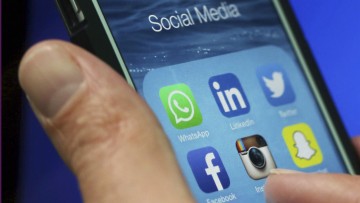You can put a baby in a highchair, but you can’t make them eat. And the same goes for delegates at events. Many will simply show up, sit through the speakers, while thinking about the party that evening, and then slink on home after catching up with their old contacts. Not to say you should treat attendees as babies, but as any new parent knows, sometimes you need to find creative ways of getting an infant to open its mouth – to engage.
Engagement is what you get when delegates enter an active dialogue with the event instead of passively letting it wash over them, transforming the event into an experience that starts in the run-up and continues after an event ends.
According to Alex Morrisroe, head of client services at Concerto Live, research suggests only 5 per cent of information people retain comes from what they hear in speeches, while 20 per cent comes from audio-visual presentations and even more so from group discussions. The amount of information retained jumps hugely if people are able to practise and explore information as soon as they get it.

“The focus should be on creating experiences, events that allow your delegates to discover information for themselves, become part of the day and shape their own agenda,” says Mr Morrisroe.
How do you know if your audience is engaging? The answer can be as easy as seeing if people are asking questions. But what about those that are too shy to raise their hands? Are people thinking about the content outside the room? Is it relevant?
Fortunately we live in a society soaked with connectivity and there are many innovative digital solutions that can measure engagement.

Social media platforms can be used to increase engagement
“These days there isn’t an event that doesn’t have an app,” says Kevin Jackson, vice president for Europe, Middle East and Africa at experience marketing agency George P. Johnson. “Asking questions and polling the audience through the life of the event is a very good way [of measuring engagement].” This can include rating speakers, inputting questions, live polling of audiences, and even allowing an event to change course live as people feedback the topics that most interest them and the points which need more or less coverage.
Existing social media platforms can be a good way of increasing and measuring engagement, asking people to use specific Twitter hashtags or join dedicated Facebook groups, for example.
But the digital age moves quickly and events technology innovation is no exception. This is where professional event management companies come in. It’s their job to stay on top of the options for increasing engagement and implementing them effectively.
“The specialist knowledge required, along with the ability for event management companies to work across industry sectors and benchmark solutions, often means this expertise is best outsourced,” says Alan Newton, co-founder and chief operating officer of Eventopedia.
He gives three examples of tools that use cutting-edge technology to help increase and measure engagement:
- Crystal Interactive – provides engagement tools including icebreakers, team building, question and answer sessions, and delegate insights as the conference ends: “Very powerful and you can visually see the engagement,” says Mr Newton.
- DoubleDutch – an event app provider to help keep track of parallel sessions, breakouts and networking. Also uses “gamification” – making a game out of itself to encourage participation: “We have experienced how it actively encourages delegate participation and engagement, particularly among those who may otherwise be too shy to join the debate verbally.”
- TweetWall Pro – allows delegates to participate using their own devices, make comments, debate and pose questions which can be projected on to a conference screen live: “The additional advantage of this technology is that delegates unable to attend the event can also join the debate, which multiplies audience engagement.”
Of course, people are savvy and won’t necessarily leap to engage if they feel they are simply buying into a cynical corporate marketing scheme. Telling them to “like” a soulless brand name or use a corporate-sounding hashtag will turn them off quicker than a cold shower and this is where authenticity comes in.
You don’t want your CEO coming out in a baseball cap and then trying to rap in front of their employees
Mr Jackson believes an event has to hit three targets in order for people to freely engage – it has to be relevant, right and real. Relevant might be self-explanatory, but right means the information has to be delivered in a way that is appropriate for your audience.
“You don’t want your CEO coming out in a baseball cap and then trying to rap in front of their employees,” he says, adding: “This has happened.” You have to know your audience, what they want and how they want to engage.
Real means authentic, honest and not forced. “The modern world is very quick at spotting what isn’t real and isn’t authentic,” he says. Red Bull does this well, he says, with their fun soap-box derbies and their sponsorship of extreme stunts such as the Felix Baumgartner freefall. The opposite of this might be a large insurance company sponsoring a music festival – what do they care? Clearly not every brand can easily attach to something as exciting as someone jumping off a platform in space, but authenticity is something to keep in mind.
Phil Boas, director of brand engagement at Paragon, says: “You need to make sure that the experience you create is going to be interesting and engaging for the consumer, and sometimes that means your product or brand taking a back seat, as not every brand has something as exciting as a new ‘iWatch’ to talk about.”
Regardless of the event or the brand, using the proper technology, perhaps via an event management company, can start engagement weeks before an event and continue to engage the audience afterwards, making a fleeting event into a more lingering experience.
